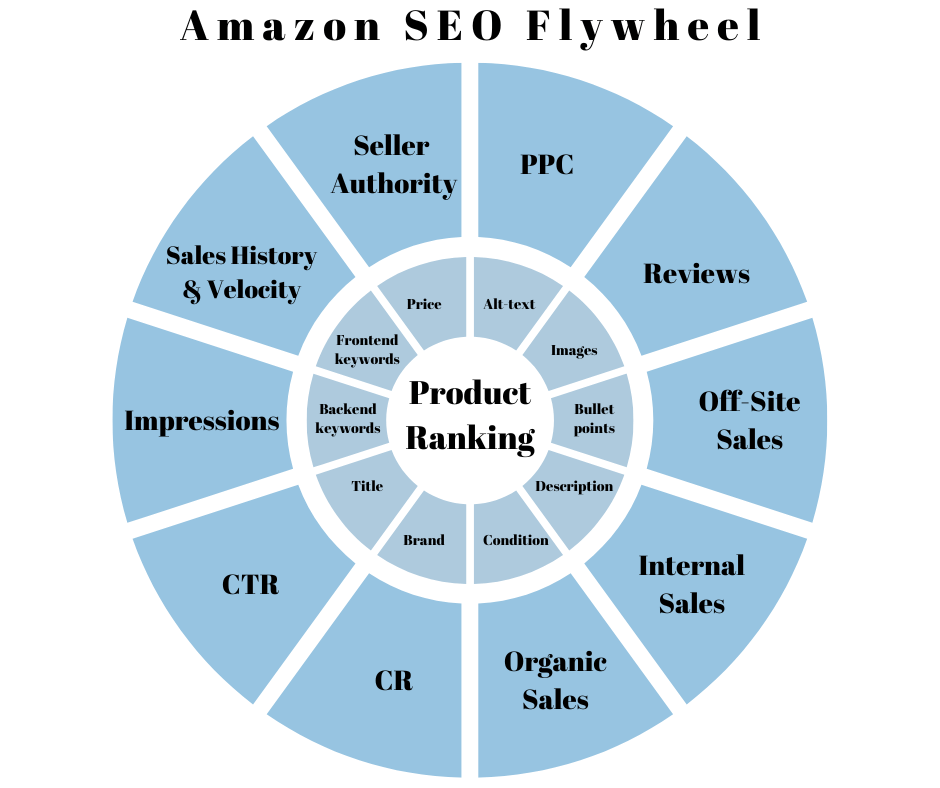
Rumors are that Amazon SEO is going through some algorithm changes. This transition- first from A9A9.com is the branch of Amazon that deve… More to A10 and now to A.I.- is happening fast. Find out how you can optimize your listings with better advertisingAdvertising is a means of communication … More tactics and a new keyword strategy.
Amazon’s algorithm is always evolving. But A.I. is likely to speed things up considerably. So, sellers who strive to rank higher and boost conversions have their work cut out for them this year. But with the right advertisingAdvertising is a means of communication … More tactics and a new keyword strategy, Amazon SEO doesn’t need to be a sore point.
Amazon SEO: From A9A9.com is the branch of Amazon that deve… More to A10 and A.I.
As explained in “How Does Search on Amazon Work”, up until 2019, Amazon applied a search algorithm developed by the A9 team. It focused on how relevant the keywords in a product listing were to a buyer’s search query. It also looked at customer feedbackA performance rating on a scale of 1 to … More and CTR. But it led to keyword stuffing.
Since then, Amazon has been applying a different algorithm. Unofficially called A10, it finds results based on relevance and sales performance. It looks at a suite of factors like seller authority and the quality of traffic (on and off Amazon), as shown on the Amazon SEO flywheel.

Some of these factors have a direct and quantifiable impact. Take, for instance, image selection with A/B split tests. With others, the effect is implied. For instance, a seller might drive traffic to Amazon with social media campaigns and influencers, but have no way to accurately measure each one’s effect on sales.
As we showed in our “Amazon SEO” guide, A10 is unique. It tries to blend the programmatic analysis of metrics with human-like judgment to understand user intent and product relevancy. But Amazon is taking things one step further with Rufus, which was released for testing earlier this year.
This AI-powered assistant uses machine learning (ML) to improve its predictions and product suggestions. It doesn’t just understand synonyms, related terms, and connections between products. It also has the potential to enable voice interaction and translations for natural language queries.
How Does AI Affect Amazon SEO?
In 2024, new and well-optimized listings have had a slight edge. But only if they could garner strong CR and CS metrics early on. But AI now asks for even more forethought. In their quest for search visibility, sellers need to be more strategic in how they predict customer behavior and needs.
That’s because with Rufus, buyers no longer need to use generic terms in their queries. These searches are purposeful, complex, and unique. They can get straight to the point, looking up specific phrases and finding a more nuanced, relevant, and AI-personalized result.
The Buyer-Seller Messaging Service is the only approved way to communicate with buyers. Note that the seller contact feature on the Amazon app is the Seller Messaging Assistant. This chat tool offers a return option right off the bat.
6 Tips for the AI-Powered Amazon SEO Revolution
1. Connect with Your Customers
Understanding what makes shoppers tick is the key to your success on Amazon. To build stronger connections with your audience, first collect data-driven insights to anticipate their needs and preferences. Then use the data to meet them where they are with personalized recommendations.
Finally, engage with them beyond just selling products. Follow up, offer after-sales services, suggest add-ons, and request feedbackA performance rating on a scale of 1 to … More. Ask them to follow your brand, stay tuned for upcoming sales, and provide their suggestions. Point out money-saving and cashback options like Super Payments.
2. Put the Customer First
Thanks to Rufus, Amazon SEO is now about giving shoppers what they want, when they want it. So, make sure your products align with current trends and customer preferences to stay ahead of the game. For instance, branded keywords are more influential now. Also, as voice search gains traction, consider optimizing for conversational phrases like “Alexa, what is the best laptop with 24-hour battery life?”
3. Quality Over Quantity
Think of Amazon’s algorithm as your personal assistant. It sorts through millions of products to find the best preference matches, not keyword matches. So, instead of cramming your listings with keywords, focus on buyer needs. Short-list your product attributes in natural language. Take into account the fact that many queries are not 100% correct in terms of syntax, pronunciation or spelling.
4. Keyword Magic
A10 doesn’t just match keywords. It now understands intent. What this shift from lexical to semantic search means for you is that you need more fluid long-tail phrases, you can’t afford any stragglers in your front-end or back-end keywords, and repetition can cost you. Keyword processing and clean-up tools can help polish your keywords.
You have a 249-byte limit on your back-end search terms. So, make the most of every byte. Look up broad and exact match search volumes. Find the terms your competitors use in their ads. To see if any irrelevant phrases are pulling your ranking down, use an index checking tool.
5. Optimize Your AdvertisingAdvertising is a means of communication … More Strategy
Advertising on Amazon can give your products a powerful boost. Try using precise segmenting and targeting options for your Sponsored ProductsPay-Per-Click (PPC) ad platform for Amaz… More, so that you reach shoppers with specific interests, behaviors and browsing history.
As these shoppers are targeted using very granular algorithms, they don’t need much convincing. Where possible, incorporate compelling storytelling, videos and other visuals in Sponsored Brand ads to grab shoppers’ attention and showcase your products.
Also, keep up with algorithm changes. Reportedly, historical ad performance is more important now in determining CPC rates. To lower CPC, boost feedback and CR. When it comes to PPC ads, remember that special characters are allowed, so they can count for something in your ranking.
6. Build Your Brand
A10 rewards sellers with strong brand presence and loyal customers. So, to boost your rankings, focus on building trust and credibility with your audience through external traffic and seller authority boosters. Showcase social proof, like positive reviews and customer testimonials, to strengthen your brand’s reputation.
Tell your brand story and create interactive experiences on and off Amazon. With the A+ experience, a.k.a. Enhanced Brand Content, your digital storefront A storefront is the page Amazon u… More and brand can stand out through high-definition images, robust product descriptions, comparison charts, and richer product narratives to boost CR, CTR, and ultimately rankings.
On Amazon.com, sellers are automatically enrolled into the Prepaid Returns Program. It generates prepaid return shipping labels on behalf of sellers and at their expense.
If you can’t cover return costs, Amazon advises you to issue refunds without a return. To do so, set your custom Returnless Resolutions Rule in Seller CentralAmazon Seller Central is a portal or a h… More. Alternatively, you can charge the buyer for return shipping if they changed their mind about the order. That is, unless you opted for Free Returns.
As you can see, Amazon holds the key to unlocking vast opportunities for businesses like yours. But to make your products stand out in this digital marketplace, you need to understand and adapt to Amazon’s ever-evolving algorithm. With customer-centric strategies and agile adaptation to algorithm changes, you can position your business for success in the hyper-competitive world of Amazon.

Melanie takes an active interest in all things Amazon. She keeps an eye on the latest developments and keeps Amazon sellers up to speed.




